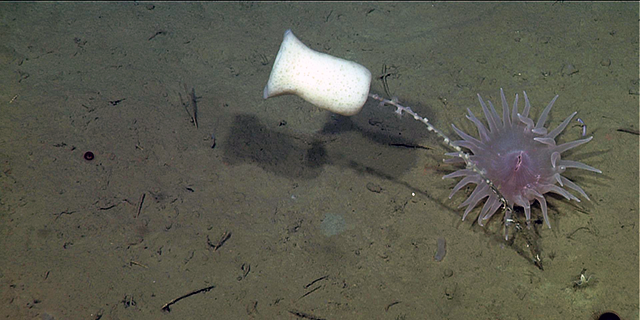Behold the Super Long Sneeze of a Deep Sea Sponge

Researchers at the Monterey Bay Aquarium Research Institute (MBARI) have captured footage of deep-sea sponges sneezing.
The time-lapse footage managed to capture the very first instance of glass sponges sneezing—in addition to detailed footage of other deep-sea sponges.
The Monterey Bay Aquarium Research Institute (MBARI) has been studying deep-sea sponges and other benthic fauna by capturing video footage and taking time-lapse photos to figure out what really goes on deep beneath the ocean’s surface.
MBARI found that deep-sea sponges do a lot more than just hang out along the ocean floor and drift aimlessly wherever the current takes them—they actually do a lot of moving around including contracting, expanding, and sneezing.
According to a paper published in Deep Sea Research Part II: Topical Studies in Oceanography, it’s tough to capture footage of deep-sea sponges contracting and sneezing because they move so slowly.
Kahn et al. write that “time-lapse photography provides a view of the seafloor at timescales that make it possible to recognize behaviors and activity of often slow-moving abyssal fauna.” And even with time-lapse, it took a watchful eye to catch the strange behavior exhibited by some of the deep-sea sponges.
“Everyone was watching sea cucumbers and urchins snuffling around on the seafloor, but I watched the sponge. And then [it] changed size,” said Amanda Kahn, a former postdoctoral fellow at MBARI. Kahn and a colleague investigated the strange occurrence and discovered that several glass and sputnik sponges along the sea floor changed in size and shape “in a rhythmic pattern” over time. Interestingly, this is the first time that sneezing has been seen in glass sponges.
Additionally, Kahn adds that “it’s not yet known what the timing of [the sponge] rhythms are or why they happen the way they do.” One theory points to waste release as the reason for the sneeze.
In the same way that humans sneeze to release irritants that come in contact with the lining of our noses, sponges sneeze—sometimes over the course of 40 minutes or more—to discharge unnecessary debris they’ve taken in during filter feeding.
In a way, they're just like us—except much slower.
You Might Also Like
